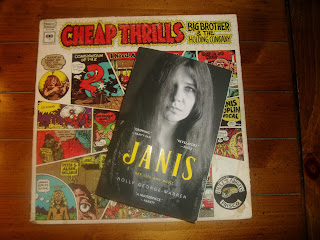It’s not my habit to watch holiday movies except by accident: they tend to be on TV during the holidays. When I was much younger I went through a phase of deliberately ignoring holidays altogether on the theory that all of them are arbitrary and each of us is capable of choosing and observing his or her own. The trouble with this – aside from the general problem of anti-dogma being a dogma of its own – is that other people are not often available for your own arbitrary festivities; were they to schedule their own as well, hardly any would coincide. So, as a practical matter, aided by twinges of nostalgia, I reverted to celebrating Thanksgiving on Thanksgiving and Halloween on Halloween and so forth. I’m still inclined to host equinox and solstice parties, but while not official holidays (in this country anyway) those are not entirely novel ideas either. In fact, they long predate civilization.
2020 is not like other years however. The absence of the usual houseful of guests prompted a bit more nostalgia this season than usual, so my movie picks Monday, Tuesday, and Wednesday were Christmas movies – sort of. In keeping with the spirit of this year, the holidays are incidental rather than integral to the plots which are all rather dark. I can recommend all three, albeit to different degrees, when settling into an easy chair tonight or tomorrow after Skyping with friends and family.
****
The Thin Man (1934)
This is a film I revisit from time to time in any event, but it is set at Christmas. The very good private detective Nick Charles (William Powell), despite the unsavory company he usually keeps, recently has married the wealthy and charming Nora (Myrna Loy) in California and regards himself as retired. They are in NYC for the holidays where Nick, against his inclinations but with Nora’s prompting, is pulled into a missing person case that is somehow tied to two murders. The bibulous Nick and Nora make a marvelous investigative couple and actually seem to like each other even when they fight. This is unlike the way couples so commonly are portrayed today when, even when supposedly in love, their fights seem to reveal genuine hostility. (Perhaps screenwriters in any time write from experience.) It is a classic detective story with heart and cleverly funny dialogue. Though originally intended as a standalone movie, it was well enough received in its day to spawn five sequels. If only there were more.
****
Better Watch Out (2017)
OK, this gets a recommendation only as a guilty pleasure, but sometimes that is enough. For the first 15 minutes this appears to be a standard teen-oriented horror film with the tropes of a tween boy with a crush on his babysitter and both facing off a home intruder. It then takes a different direction. There isn’t much more I can say without spoilers, but if you sometimes like darkly comedic (but not satirical) horror, this may be for you: not highbrow but fun. Yes, it is set at Christmas.
****
Eyes Wide Shut (1999)
Stanley Kubrick’s final movie has more than one theme. The primary one is the nature of betrayal, particularly within the context of marriage. When does cheating begin? Is the thought enough? Dr. William Harford (Tom Cruise) and Alice Harford (Nicole Kidman) verbally spar after some jealous moments at a party. William is disturbed when Alice tells him that once she would have run off with a naval officer had he only asked. Is that betrayal even though he didn’t ask and she didn’t go? William, still brooding, later picks up a hooker and only an emergency medical phone call prevents anything from happening. Is this betrayal? William’s night gets stranger as he manages to crash an erotic party at a private estate. Has betrayal happened yet?
The second theme is the existence of an ultra-elite who don’t live by the rules that apply to the rest of us, and don’t have to. William and Alice, by normal standards, are elite: their real assets in NYC alone make them one-percenters. Yet, they are still part of the hoi polloi by the standards of the ultra-elite. William makes proud a point of identifying himself as a doctor wherever he goes, but to the super-rich, however friendly they might behave toward him, this makes him a tradesman no different than a plumber and most definitely an outsider. The Christmas setting likely was chosen just as a contrast to the fundamentally pagan attitudes and rites at the estate where William doesn’t belong.
By the way, the movie was deliberately filmed in 4:3 ratio (as most movies were until the 1950s) in order to narrow the viewer's view. It is the way it should be watched.
Tom Cruise and Nicole Kidman broke up immediately after making this movie. Neither has been forthcoming about whether the film had anything to do it.
****
So, those are three options to consider,
but if the reader would rather watch It’s a Wonderful Life yet again, I
understand.
Trailer: Eyes
Wide Shut









